Energy Consumption Facts
What is Energy Consumption? Simply put, energy consumption is the amount of power used at a given time or year. In a more technical term, energy consumption refers to the power used per unit to operate things, such as the appliances you use in the house or household work. Power is usually measured in units of watts (W) or kilowatts (kW). The amount of energy used differs widely depending on the standard of living of the country, and the climate. In most cases, the energy you use is always more than the power you really need. “One of the main reasons your electric bill may be high is that you leave your appliances or electronics plugged in whether you’re using them or not. While that might not have been such a problem years ago, most modern appliances and gadgets draw electricity when turned off.”
Here are 20 facts about energy consumption to reflect on at all times when using energy;
- A single light bulb uses only about 10% to create a light, the rest is used to create heat. The standard bulbs use 80% more energy than fluorescent light bulbs. If you look at it, we should use fluorescent light bulbs to cut down on our consumption. Remember the slogan, it starts with you.
- Did you know residential consumption for lighting in the United States in 2019 was 75 billion kWh? To put it lightly, that’s 5% of all residential sector electricity consumption. That’s before we talk about all the other household appliances you use regularly, not forgetting the appliances that are always on even when you are not using them.
- Cooling and heating costs make up approximately 50% of the average heating bill in most U.S. homes.
“Trends in space heating are partly responsible for the increase in all-electric homes in the United States. In 2015, electricity was used as the main source of energy for space heating in 36% of homes that were heated, an increase from 2009 that continues a long-term trend. Natural gas continued to be the most common energy source for main space heating at 51% of heated homes in 2015. The proportion of heated homes using propane (4%) was one percentage point lower than in 2009. Electric heat pumps, for example, are well-suited for heating in areas where winters are relatively mild. Of the 11.8 million households in 2015 that used electric heat pumps, 8.4 million (71%) were in the South. The high cost of electric heating in colder climates has often limited the use of heat pumps and other electric equipment in those areas. Population movement to warmer climates has also increased household use of air conditioning. In 2015, more than 76 million households (64%) used a central air-conditioning system, an increase from less than 66 million households (59%) in 2005. Space conditioning (heating and air conditioning) accounts for about half of all energy consumed in the residential sector.”
- During its lifetime, a single ceiling light fixture can use as much as $5,000 of electricity.
- American refrigerators consume approximately the same amount of energy as 25 large power plants produce in a single year.
“Multiply your refrigerators demand of 805 watts by 8 hours to get 6,440 watts per day. Divide that amount by 1,000 to get 6.44 kilowatt-hours. The average American is charged 12 cents per kWh, so you can assume that your fridge could cost you 77 cents per day or $23.10 per month for electricity.”
- The average washing machine user runs their device at 140 degrees (F), but reducing the machines temperature to 104 degrees can cut energy use in half. Also, relying on the cold water function instead of the warm water to reduce the workload of your heater creates more energy efficiency.
- Simply using the sleep feature on an electronic device when it’s not in use can save $70 a year in energy costs.
- Energy efficient washing machines, use approximately 1/3 less energy than standard machines.
- If every home in the United States replaced one light bulb with an energy-efficient alternative, the amount of energy saved could light 3 million homes for a single year.
“It is estimated that in 2014, the United States used approximately 412 billion kWh of electricity just for lighting. The major trend in U.S. household lighting has been the shift from less-efficient lighting—primarily incandescent bulbs—to more energy-efficient lighting—including compact fluorescent lamps (CFLs) and light-emitting diode bulbs (LEDs). In 2009, only 58% of U.S. households reported any indoor energy-efficient bulbs in use for at least one hour per day. The 2015 RECS found that 81% of all households reported having at least one CFL installed, and 29% of all households reported at least one LED installed. Only 11% of households reported that all of their light bulbs are incandescent, while 18% reported no incandescent light bulbs.”
- The microwave is the most energy-efficient appliance in most kitchens. It uses one-third of the wattage that the average oven uses. The electric oven uses 3% of household power.
“In addition to heating dishes hundreds of degrees, some ovens have advanced features like self-cleaning capabilities that help to make the process of preparing a meal easier. On top of that, the heat produced by the electric oven spreads throughout the house and may prompt those within it to try and reduce the effects by using the air conditioner.”
- The average household wastes $150 per year in energy costs just from holes and cracks in their homes.
“Heated or cooled air can leak through the cracks and holes in your home. Air leakage represents about 20% to 30% of heat lost from an older home.”
“According to the Energy Star program, most people could save about 20% on their heating and cooling costs by sealing up air leaks. Most older homes are riddled with holes in the “building envelope,” which is made up of the outside walls, roof, and foundation. These leaks range from large, obvious holes — such as broken or missing windowpanes in the basement — to tiny, almost invisible cracks. Small cracks can have a big impact. An eighth-inch-wide, 6-foot-long crack between a door and a door jamb, for example, is equivalent to a 9-square-inch opening! On cold winter days, leaks in the building envelope let heated air escape and cold air enter. In the summer, cool air slips out and hot air seeps in.”
- It costs just $0.47 per year to charge an iPhone 6. It takes 49 times as much energy to charge a desktop computer and 72 times as much energy to power a flat-screen television.
“Televisions also consume energy when they are turned off too. This stems from vampire energy that causes TV sets to use electricity in order to remain in standby mode for a quick power-up.”
- The average American uses approximately 313 million Btu of energy, while the worldwide average per person is around 75 million Btu. “The average U.S. household used 90 million British thermal units (Btu) in 2009 or nearly 50% more energy than the average car in a year. Homes built since 2000 use only 2% more energy on average than older homes, despite being on average 30% larger.”
- Approximately 40% of the United States’ energy sources are used to generate more electricity.
“Domestic energy production was greater than U.S. energy consumption in 2019. In 2019, the U.S. energy production exceeded U.S. energy consumption on an annual basis for the first time since 1957. The United States produced 101.0 quads of energy and consumed 100.2 quads.”
- Approximately 30% of the energy used in most buildings today is either unnecessary or used inefficiently. As of 2015, households account for 55% of the energy used in buildings.
- The United States uses approximately 23% of the world’s energy, yet it only holds about 5% of the world’s population.
- Google alone uses enough energy to continuously power 200,000 homes. The amount of energy it requires to conduct 100 searches on the site is the equivalent of a standard light bulb burning for 28 minutes.
- Coal is the largest global source of electricity, but only about 1/3 of the energy from the average coal power plant makes it to customers in the form of electricity.
- Hydropower is the most used renewable energy resource in the United States. It produces approximately 7% of the country’s electricity.
- It is estimated that the United States spends more than $300 billion a year on energy that goes to drafty doors and windows, inefficient appliances, and other energy wasters that could be easily remedied. This is more than the United States spends on its military every year.
What our customers are saying
See why our power customers say we're the best electricity provider in Texas!
I was worried about getting electricity for my home through a prepaid company. I was calling around to see different rates then going through all the hassle of credit checks while dropping points each…
I have been with this company for several years and have been very happy since. Even when I moved, they made my usually stressful situation very easy and carefree. I recommend them to everyone that I…
I have enjoyed the service for 2 years now. In the beginning this service was planned to be temporary but with the service being so effective for me i decided to keep it for the long haul. I’m a happy customer.




